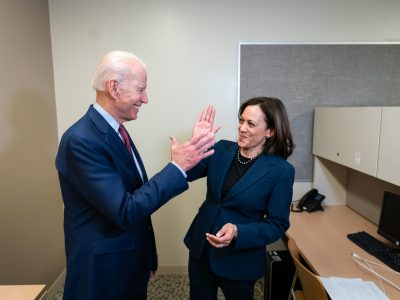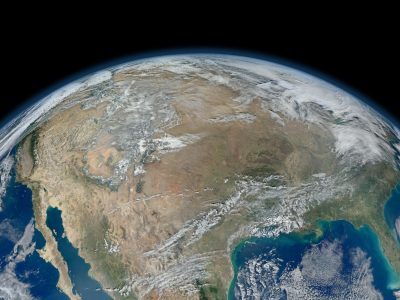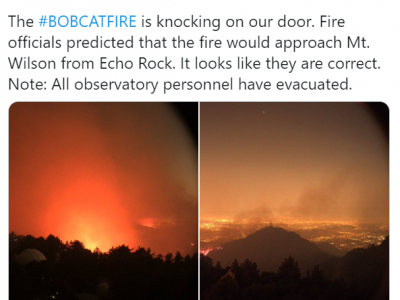Search Results for: feed
Report from Planet X
Help, our energy system screwed up our planet!
A long time ago, in another galaxy far far away . . . . Dear Galactic Governance Collaborative, Those of us who colonized Planet X now find ourselves in dangerous straits. We request urgent assistance due to escalating environmental instability. You’re thinking it’s not easy to screw up an entire planet. You’re right about that. …
Continue reading “Report from Planet X”
CONTINUE READINGTackling Agricultural Methane: Monitoring and Policy Strategies
A review of inventory, monitoring, and regulatory tools needed to reduce agricultural methane emissions
(This post was authored by Eric Peshkin, a JD candidate at NYU School of Law and CLEE summer research assistant) Last week, global leaders announced a commitment to reducing global methane emissions. In a previous blog post, I briefly reviewed some of the innovative strategies to reduce methane emissions from agricultural livestock and rice operations, …
Continue reading “Tackling Agricultural Methane: Monitoring and Policy Strategies”
CONTINUE READINGTackling Agricultural Methane: An Overview of the Science
Promising strategies and technologies to address an urgent climate priority
(This post was authored by Eric Peshkin, a JD candidate at NYU School of Law and CLEE summer research assistant) Agricultural greenhouse gas (GHG) emissions from the raising of livestock and growth of crops for human consumption represent 14% of global GHG emissions. Methane (CH4) is a central GHG generated during agricultural production (via microbial …
Continue reading “Tackling Agricultural Methane: An Overview of the Science”
CONTINUE READINGMethane Emission Reduction
Last Best Chance?
The publication last week of the UN IPCC Sixth Assessment Report underscores the urgent need for action to substantially reduce methane emissions: “Strong, rapid and sustained reductions in methane emissions would [ ] limit the warming effect resulting from declining aerosol pollution and would improve air quality.” Some Methane Facts Methane is the second most …
Continue reading “Methane Emission Reduction”
CONTINUE READINGTowards Optimal Climate Policy, Part II
The future of effective climate policy requires balancing equity, efficiency, political feasibility, and technological innovation
In the prior blog post in this two-part series, I talked about how current debates on climate policy that are focused on equity and efficiency are inadequate. Today, I’ll explain how we might advance political feasibility through climate policy, how that is connected to technological innovation, and how we must necessarily balance between all four …
Continue reading “Towards Optimal Climate Policy, Part II”
CONTINUE READINGTowards Optimal Climate Policy, Part I
Moving the debate beyond equity and efficiency
As Congress debates two large pieces of legislation – both a bipartisan infrastructure bill and a partisan reconciliation package – a key question is the extent to which either piece of legislation (assuming it is enacted) addresses climate policy. And the recent flooding in Europe, the wildfires in the western US and Russia, and more …
Continue reading “Towards Optimal Climate Policy, Part I”
CONTINUE READINGEarth System Interventions for Sustainability
We actively shape major Earth systems, with increasingly powerful technologies. We should face up to it.
Stewart Brand–a contender for the most interesting living person in the world–famously opened the Whole Earth Catalogue in 1969, “We are as gods and might as well get good at it.” Importantly (and often misunderstood), he meant not that we are gods, but instead that technologies have given humanity powers that had previously been exclusive …
Continue reading “Earth System Interventions for Sustainability”
CONTINUE READINGBiden’s Green Team
Here are the six who will lead the way on environment and energy issues.
Biden’s choices to head particular agencies have trickled out over the past few weeks. It’s only when you put them together that you get a sense of the overall time. It’s a very diverse group, all of whom seem to have strong environmental commitments. Pete Buttigieg, Department of Transportation. Buttigieg is a well-known figure from …
Continue reading “Biden’s Green Team”
CONTINUE READINGGeoengineering: Ready for its Close-up?
After long being marginalized in climate debates, geoengineering is experiencing a surge in attention — which carries both opportunities and risks.
If you’re a long-time Legal Planet reader, you may have noticed that I weigh in once a year or so to say that geoengineering – active engineered response to global climate change – is going to get prominent, and intensely contentious, soon. Geoengineering? Before continuing, we need a brief aside about names. Even what to …
Continue reading “Geoengineering: Ready for its Close-up?”
CONTINUE READING“Knocking on Our Door”: Wildfires Threaten Mt. Wilson Observatory and San Gabriel Foothill Communities
On Sept. 15, Angeles National Forest reported the Bobcat Fire was within 500 ft. of historic observatory in San Gabriel Mountains
The Bobcat fire blazing in the San Gabriel Mountains is threatening lives and homes, forcing evacuation of communities in foothills clogged with acres of brush dried out by the hottest August ever recorded in California. For flatland Angelenos like me, the fires are both omnipresent and distant, sensed only by the hazy skies and smell …
CONTINUE READING









